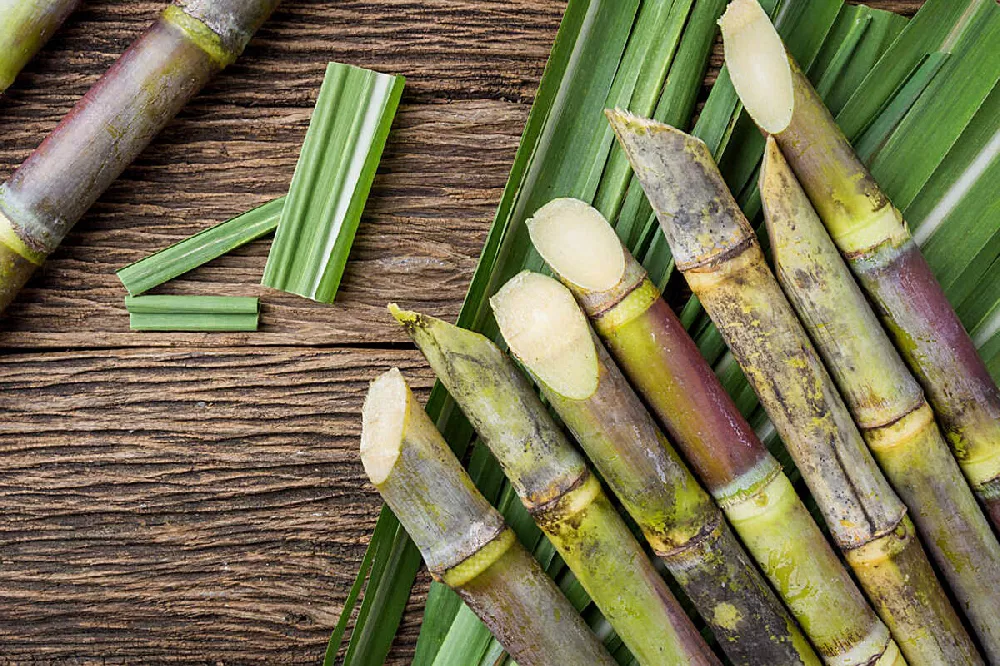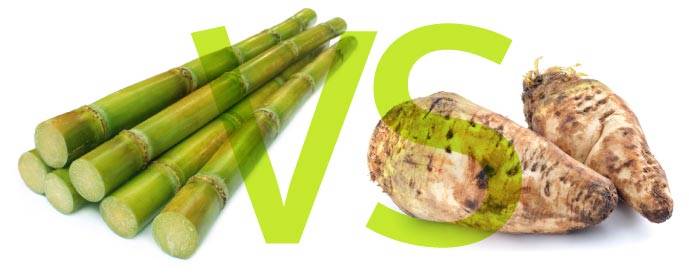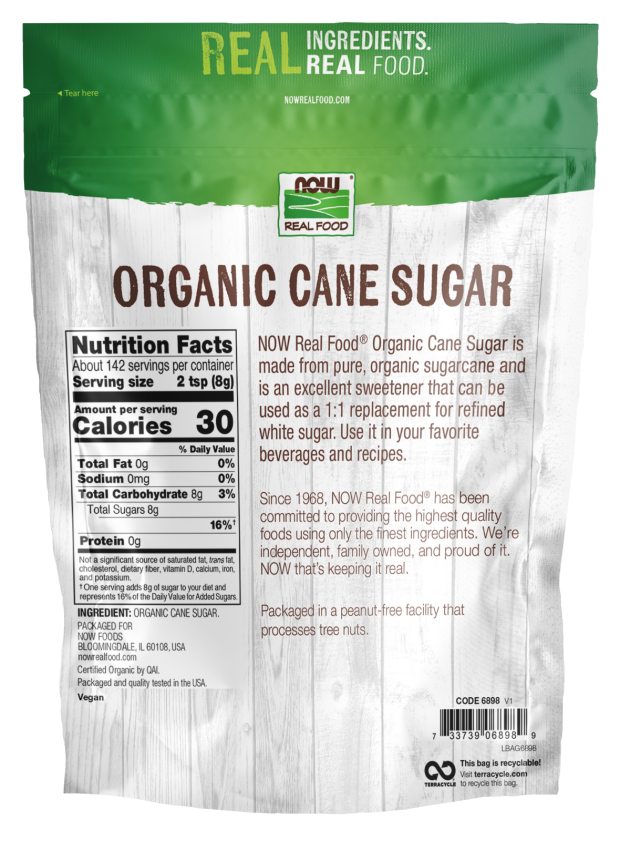The Journey of Cane Sugar Processing: From Harvest to Crystals
The Journey of Cane Sugar Processing: From Harvest to Crystals
Blog Article
Checking Out the Comprehensive Tips Included in Walking Cane Sugar Handling From Collecting to Refinement
The procedure of walking cane sugar production encompasses a collection of intricate actions, beginning with the mindful harvesting of sugarcane and finishing in the refinement phases that make certain the last item fulfills market criteria. Each phase, from the extraction of juice to the purification and formation processes, plays a critical duty in identifying the quality and character of the sugar.
Collecting Sugarcane
Harvesting sugarcane is an essential action in the walking cane sugar handling chain, as it straight influences the top quality and yield of the end product. Appropriate timing and techniques are important throughout this phase to guarantee optimal sugar web content and lessen losses. Usually, sugarcane is gathered when it reaches maturity, normally 12 to 18 months after planting, characterized by a high sucrose concentration.

Post-harvest, the sugarcane should be processed promptly to protect against sucrose degradation. Preferably, harvested walking cane needs to be transferred to processing facilities within 24-hour to protect sugar quality. For that reason, efficient logistical planning is critical to maintain the honesty of the harvested crop throughout the supply chain.
Extraction Process

The crushed walking cane undergoes a collection of pushing operations to make the most of juice healing. Commonly, warm water is splashed onto the crushed walking stick, producing a countercurrent flow that helps liquify the sugar while additionally assisting in the removal procedure. The juice accumulated from this procedure has not only sugar however additionally numerous organic substances and pollutants.

To boost removal performance, some facilities may utilize diffusion techniques, where the sugarcane is saturated in warm water, allowing the soluble sugars to diffuse right into the fluid. The resulting juice, abundant in sucrose, is after that routed to succeeding processing stages, laying the structure for filtration and refinement. The removal process is therefore crucial in establishing the quality and yield of the last sugar item.
Purification Methods
The purification strategies used in cane sugar processing are vital for transforming the raw juice into a high-quality sugar product. These techniques primarily aim to get rid of contaminations, such as dirt, plant products, and not natural substances, which can detrimentally impact the last product's taste and shade.
One of one of the most typical purification methods is information. This process entails adding lime and heat to the raw juice, which helps with the coagulation of impurities. The resulting precipitate is after that eliminated through sedimentation or filtering, yielding a more clear juice. Additionally, using phosphoric acid can enhance the information process by further binding contaminations.
Another considerable strategy is carbonatation, where co2 is presented to the clarified juice. This response creates calcium carbonate, which records remaining impurities and promotes their removal.
Additionally, turned on carbon therapy may be applied to Learn More adsorb any type of staying colorants and organic impurities, making certain an extra polished item. The mix of these approaches successfully prepares the sugar juice for subsequent action in the refining process, establishing the stage for the production of premium cane sugar.
Formation Methods
After the purification phase, the following essential action in walking cane sugar handling includes formation techniques, which play a critical function in transforming the cleared up juice into strong sugar. This procedure normally uses 2 main methods: spontaneous condensation and regulated condensation.
In spontaneous crystallization, supersaturated sugar options are enabled to cool normally, causing the development of sugar crystals over time. This technique is simpler yet may lead to unequal crystal sizes and reduced pureness degrees. On the other hand, controlled condensation is an extra accurate technique where focus, seeding, and temperature representatives are meticulously managed. This technique enables the consistent development of sugar crystals and greater pureness.
During crystallization, the cleared up juice is focused via dissipation, enhancing its sugar content till it reaches supersaturation. When this point is attained, either method can promote the formation procedure. Cane Sugar Processing. The resultant sugar crystals are then separated from the remaining syrup via centrifugation
Ultimately, the choice of formation approach influences the top quality, dimension, and pureness of the final sugar product, making this step vital in the general walking stick sugar processing treatment.
Refinement and Packaging
How can the pureness and quality of walking cane sugar be better enhanced after crystallization? The refinement procedure plays a crucial duty in accomplishing top quality walking cane sugar. Following formation, sugar undergoes a thorough cleaning to get rid of impurities and residual molasses. This is normally completed making use of warm water or heavy steam, which helps dissolve and extract unwanted elements while preserving the sugar crystals.
Following, the sugar undergoes a procedure called centrifugation, where it is rotated at high rates to separate the cleansed sugar crystals from the remaining fluid. After centrifugation, the sugar is often further fine-tuned through a technique called carbonization or phosphatation, which makes use of turned on carbon or phosphoric acid to eliminate color and off-flavors.
As soon as fine-tuned, the sugar is dried to attain the preferred wetness content, making sure that it continues to be secure during storage space and transportation. The final step involves product packaging the refined sugar in airtight and moisture-proof containers to preserve its explanation quality and stop contamination. Cane this content Sugar Processing. Proper packaging not just expands service life yet additionally assists in very easy handling and circulation, making certain that customers get sugar that fulfills the highest possible standards of purity and quality
Conclusion
The detailed actions included in walking stick sugar handling, from the precise harvesting of sugarcane to the intricate improvement and product packaging stages, emphasize the relevance of each phase in guaranteeing top notch sugar manufacturing. Optimal harvesting strategies, effective extraction techniques, and extensive filtration processes collectively contribute to the final product's pureness and security. The crystallization and succeeding packaging methods even more enhance the stability and life span of the sugar, highlighting the intricacy and precision fundamental in this important farming sector.
The procedure of cane sugar production includes a series of intricate actions, starting with the mindful harvesting of sugarcane and culminating in the refinement stages that make sure the last product meets market criteria. Ideally, collected walking stick should be transferred to processing facilities within 24 hours to protect sugar quality.In spontaneous condensation, supersaturated sugar services are allowed to cool down normally, leading to the development of sugar crystals over time - Cane Sugar Processing. The improvement process plays a crucial function in attaining premium walking stick sugar.The comprehensive steps included in cane sugar handling, from the meticulous harvesting of sugarcane to the elaborate refinement and product packaging phases, emphasize the relevance of each stage in making certain high-quality sugar manufacturing
Report this page